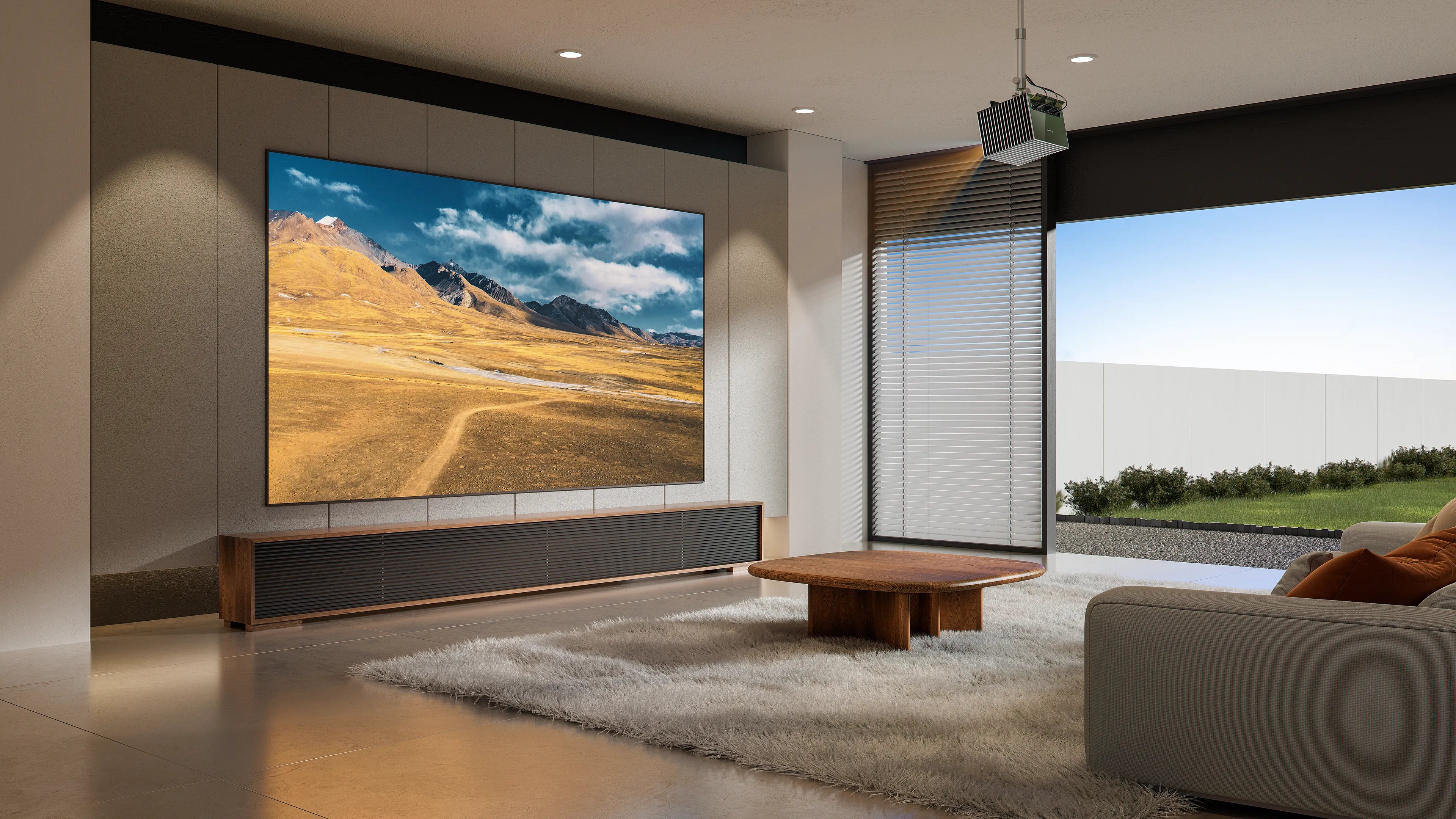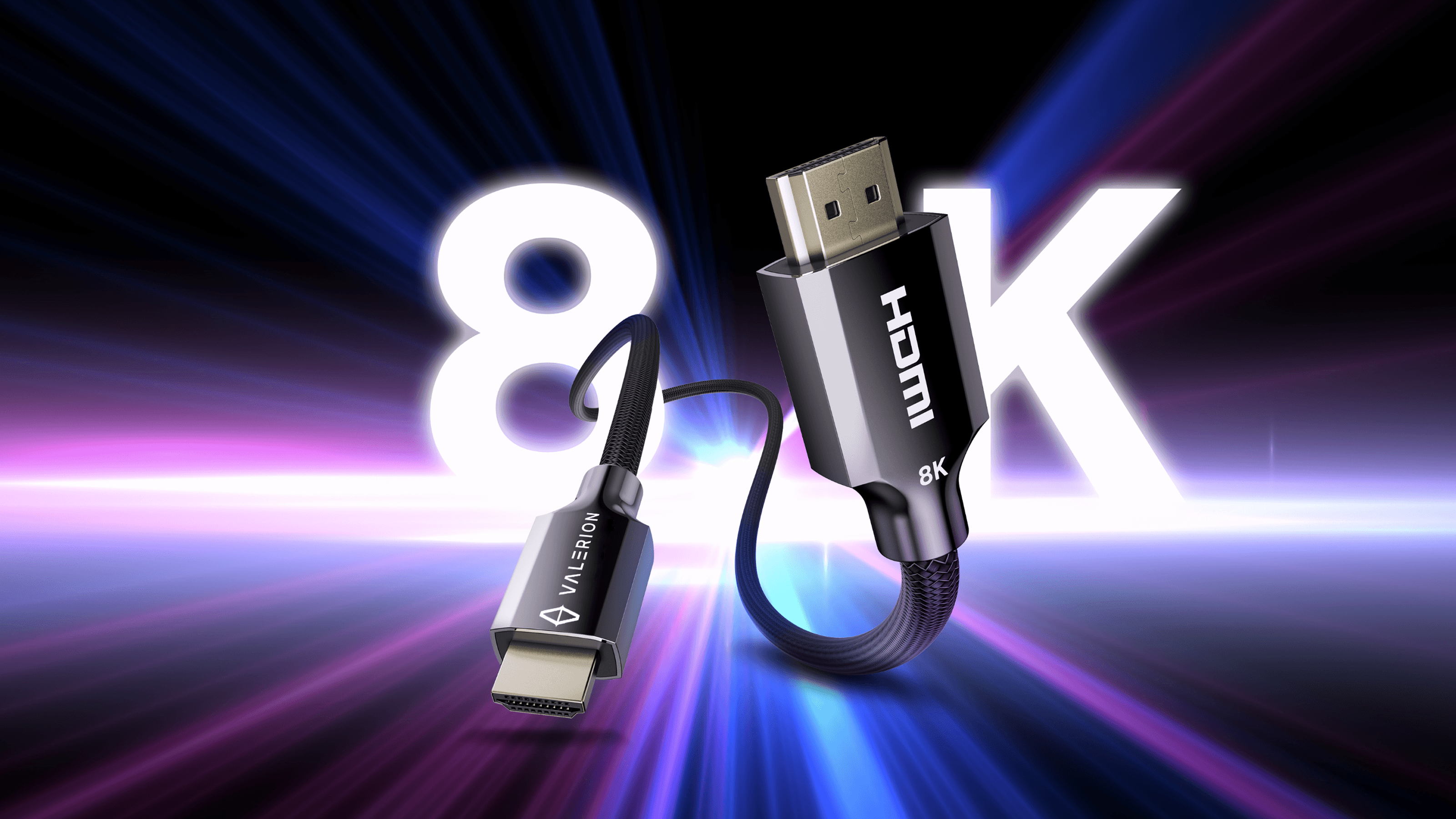Are you nervous about setting up a projector screen for your home theater? Don't worry - you're not alone. The thought of mounting screens and projectors may seem daunting when planning a DIY home theater, but we have all the information you need.
A good projector screen will magnify your projector's light. Your images become sharper and more vivid. The proper installation of your projector screen plays a vital role - a secure mount will give optimal viewing, safety, and lasting performance. Screen placement matters just as much, and most home theater enthusiasts are unaware of this fact. Your projector needs more distance from the screen when you want bigger images.
This piece walks you through the complete projector screen setup. You'll learn everything from selecting the right screen size to tweaking picture settings for the best possible viewing. These expert tips will help you build a theater that matches your local cinema's quality. The guide covers both in-ceiling models and tripod screens for outdoor movie nights.
Let's start by creating the perfect home theater setup that fits your needs.
Choose the Right Screen and Location
The right projector screen plays a key role in creating an immersive viewing experience. You have several screen options to think about based on your needs. Fixed-frame screens provide the best image quality with minimal light reflection. Motorized screens let you control everything from a remote. Manual pull-down screens are a budget-friendly choice.
The distance from your seating area helps determine the ideal screen size. Experts suggest placing your screen so your eyes line up with the point between the top two-thirds and bottom one-third. A 98" screen in a room with 8-foot ceilings would leave about three feet at the bottom and one foot at the top.
To name just one example, consider these viewing distance guidelines: an 80-inch screen works best at a distance of 8.9 feet. A 100-inch screen needs 11.2 feet of distance, and a 120-inch screen requires 13.4 feet. A 2,000-lumen projector works well for a 120" screen in dark rooms. Rooms with ambient light might need a 3,000-lumen projector to maintain vibrant images.
You can read this guide to learn more about choosing the projector screen size based on your viewing distance.
Outdoor setups require screens that are built to withstand weather conditions. Fixed-frame outdoor screens provide superior image quality without wrinkles. Inflatable screens are quick to set up, but they may have uneven surfaces.
How to Assemble and Prepare the Projector Screen
You've picked your screen type and planned the location. Now it's time to start putting everything together. Good prep work and careful handling will help your projector screen look great and work perfectly for years.
Step 1. Lay Out All Parts and Tools
Begin by gathering all your components and tools. A typical fixed frame screen needs:
- The complete screen kit (frame pieces, screen material, tension rods)
- Hardware kit (brackets, screws, anchors)
- Phillips screwdriver
- Drill
- Level
- Allen wrench (often included)
Take everything out of the box and check that you have all the parts by comparing them to the inventory list. Some screens require specific tools, such as an Allen wrench, to assemble the frame. Inspect each component carefully to ensure that nothing is damaged or defective before you begin.
Step 2. Assemble the Frame on a Clean Surface
Your first step is to create a clean work area by spreading large blankets to protect your floor and screen parts. This keeps dirt away from your screen material and prevents scratches on the frame pieces.
Set up your workspace and lay the frame pieces roughly where they'll connect. Most fixed frames use four to six aluminum pieces that join at the corners. Many manufacturers make this easier by marking matching frame sections with letters (A to A, B to B).
The next step is joining the corners with brackets and screws. Put the frame screws through the corner brackets and tighten them well—you'll need 16 screws to complete the frame. Your screen model might use external L-brackets or internal ones that slide into the frame.
Step 3. Handle Screen Material With Care
Take the screen material out carefully and place it inside your assembled frame with the viewing surface facing down. Make sure you keep the screen clean during this step.
Look for the tensioning rods that go with each frame rail. Most screens come with special tension rods that fit into pockets around the screen's edge to create a flat surface. Be very careful when you put these rods in so you don't damage the viewing area.
The last step is attaching the screen to the frame with clips or fasteners. Many screens work best when you start at one corner and work your way around. This helps keep the tension even across the whole surface.
A quick tip: screen assembly works better with two people, especially for bigger sizes—doing it alone can be tricky and risky. Having someone help makes the job easier and safer for your new screen.
How to Mount the Projector Screen Securely
Your home theater's success depends on mounting that projector screen the right way. A poorly installed screen can damage your walls, injure someone, or damage your expensive equipment. Let's ensure you get this done correctly.
Step 4. Find Wall Studs or Use Heavy-Duty Anchors
The real secret to a rock-solid mount lies behind your wall. Most home theater screens weigh more than drywall can handle safely, especially the big 150-inch ones. Your best bet is to find those wall studs. Here are three ways to locate them:
- Use a stud finder—it's quick and easy
- Look for nail heads sticking out of the drywall that show where studs might be
- Tap the wall—studs make a solid sound while drywall sounds hollow
Brick or concrete walls don't need stud-finding. However, if you're working with drywall and can't find studs, you'll need heavy-duty anchors or toggle bolts rated for the weight of your screen.
Step 5. Use a Level to Line Up Mounting Brackets
Next, measure and mark where the bottom of your screen will sit. Take your level and draw a perfectly straight line across the wall. The exact height from floor to mounting holes really matters. Even a slightly crooked screen will drive you crazy during movie night.
Step 6. Drill and Install Brackets or Hang the Screen Directly
After marking your spots, drill pilot holes into the studs. Make them a bit smaller than your screws to avoid damaging the drywall. If you're using wall anchors instead of studs, drill holes for those. Your screen will either:
- Need separate mounting brackets installed first (keep them level before you tighten)
- Mount directly if it has built-in mounting points
Heavy screens work better when you mount a wooden board across several studs first. Then attach your screen to the board. This distributes the weight more evenly than single mounting points.
For Portable Screens, Ensure Stable Ground Placement
To have a movie night in your backyard, a portable setup with the Valerion Outdoor Camping Portable Folding Matte White Screen is a fantastic choice. The lightweight aluminum alloy frame and foldable design make it easy to set up and store, so you can forget about the hassle of a shaky tripod. It even comes with a wheeled carrying bag for effortless transport.
Setting up this screen is straightforward. Just unfold the zinc alloy frame and use the multi-point snap button system to lock everything into place—no tools are needed. The matte white PVC screen material offers a great viewing experience with a 1.3 dB gain and a 170° half-gain viewing angle, supporting resolutions up to 8K. Just double-check that all the snap buttons are secured before you start your movie.
Optimize for Best Picture and Sound
Your screen needs proper adjustment to achieve cinema-quality projection once it's secured in place. The projector's throw ratio will determine the ideal distance between the projector and screen to get your desired image size.
These steps will help you get the best picture quality:
- The focus ring should be turned until you see a sharp and clear image.
- Make the image fit your screen dimensions perfectly by using the zoom ring. You might need to zoom in or move the projector back if the image doesn't fill the screen completely.
- Keystone adjustment can fix any trapezoidal distortion, but don't use too much of either as it reduces image resolution. The best results come from lining up your projector perpendicular to the screen.
- Select preset modes like 'Theater' or 'Filmmaker Mode' to adjust color settings for cinematic content. Test patterns help you set the right contrast and brightness levels for optimal visual depth.
- Maximum bandwidth and performance require gaming consoles or devices to connect directly to non-ARC/eARC HDMI ports.
The screen's surface needs regular cleaning with compressed air and a microfiber cloth that's slightly damp with a 95% water and 5% mild soap solution when needed. Ambient light rejecting screens require horizontal wiping only - never use circular motions.
Blackout curtains help control ambient light and create darker environments, which is particularly important for non-ALR screens.
Conclusion
Setting up a projector screen can feel overwhelming at first. But the process becomes much easier when you break it down into simple steps. Your home theater experience depends a lot on picking the right screen size and type that works for your space. The right installation will give you perfect viewing angles and keep everything secure.
The screen position matters as much as the projector placement. You should arrange your screen carefully with your seating setup. Keep your eye level right where the top two-thirds meets the bottom third of the screen. This setup will help prevent neck strain during long movie sessions.
The screen needs to attach firmly to wall studs or ceiling joists whenever possible. This approach prevents accidents and keeps the screen tension perfect for better picture quality. Handle the screen surface with care to keep its reflective properties lasting longer.
A proper calibration turns a simple setup into a professional home theater system. Adjust the focus, zoom, and keystone settings to create sharp, perfectly-sized images. Dark rooms make a huge difference - blackout curtains will improve your contrast and color accuracy by a lot.
Take your time during setup, and you'll get amazing results. Your work will pay off with a cinema-quality experience right at home. Once everything's installed the right way, you just need to invite friends and family over, make some popcorn, and enjoy countless hours of entertainment on your new projector screen.






